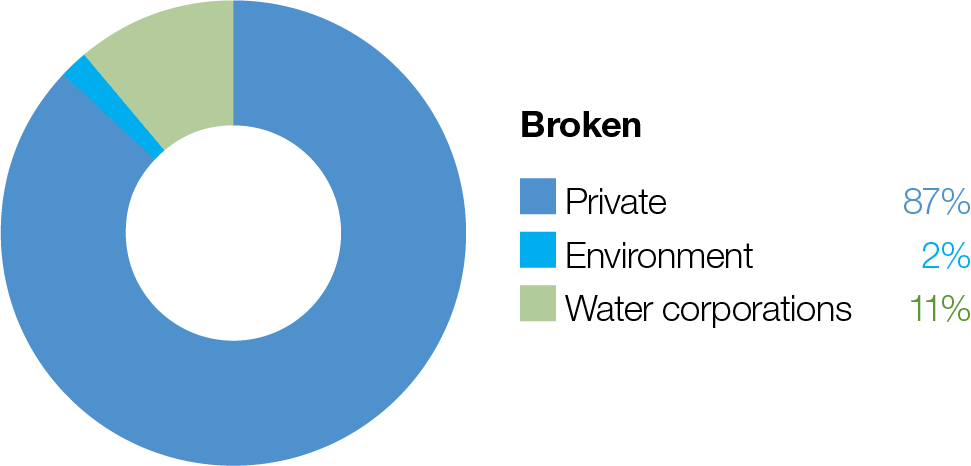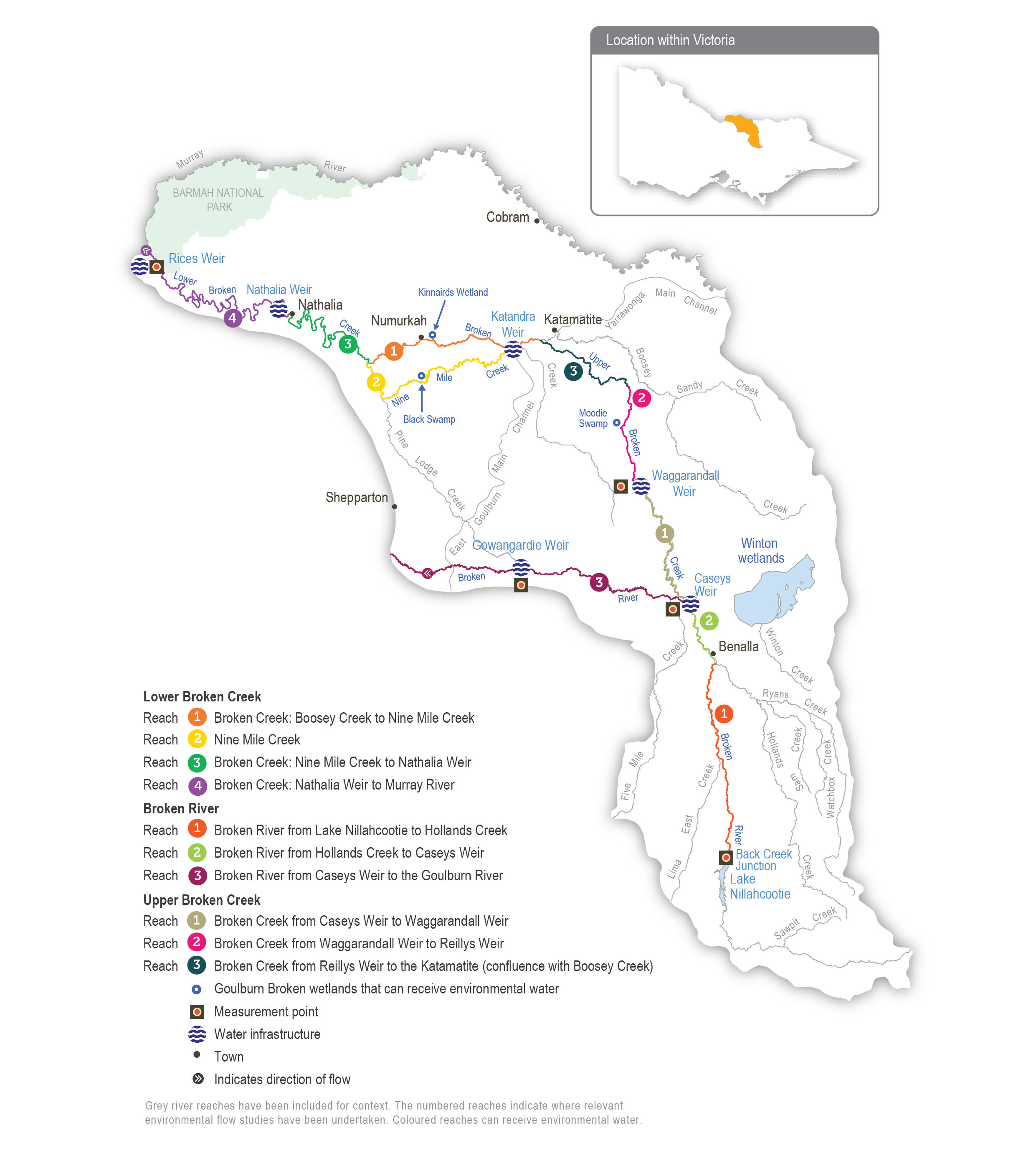Lower Broken and Nine Mile creeks have been regulated for over a century. Before regulation, the creeks would have had most of their flow in winter/spring and contracted to isolated pools or dried out during summer/autumn. The adjacent floodplain would have also flooded regularly. The creeks now have numerous weirs that maintain a relatively constant water level from mid-August until mid-May to support irrigated agriculture and little flow during the non-irrigation season. These modifications have changed the way native species use the creek and favour invasive species (such as arrowhead). Previously, native fish would have moved into the creek when it was flowing and returned to the Murray River as it dried. Both creeks now provide year-round habitat for native fish, and fish passage structures allow fish to move between weir pools. Water for the environment is used to support these permanent fish habitats by providing flows to trigger fish movement and support fish passage, encourage the growth of native plants, promote in-stream productivity, control water quality and flush the water fern azolla as necessary.
Regulated water is delivered to lower Broken Creek from the Goulburn and Murray systems via the irrigation channel network. Lower Broken Creek is operated separately from upper Broken Creek and Broken River, which are both supplied from Lake Nillahcootie on upper Broken River.
Water for the environment can be provided to lower Broken Creek from the Goulburn system through the East Goulburn Main Channel and from the Murray system through the Yarrawonga Main Channel. Water is released into lower Broken Creek from several irrigation regulators along the length of lower Broken Creek. The main priority for environmental flows in the lower Broken Creek system is to maintain a minimum flow throughout the year to maintain suitable habitat for native fish. Particular attention is given to reaches 1 and 2 during the non-irrigation season when the flow can stop. The next priority is to deliver freshes in winter/spring to trigger fish movement and spawning, maintain water quality and manage azolla accumulations in reaches 3 and 4. Rices Weir is the measurement point for environmental flows in lower Broken Creek.
Some of the environmental flow targets for lower Broken Creek are partly or wholly met by operational water releases: intervalley transfers (IVTs) from the Goulburn to the Murray or Barmah Choke bypass that are delivered to meet downstream demands. These operational deliveries mainly occur during peak irrigation demand periods between spring and autumn. Water for the environment may be used to supplement these operational releases and to deliver recommended flow components that are not met by operational releases.

Proportion of water entitlements in the Broken system held by private users, water corporations and environmental water holders on 30 June 2020




